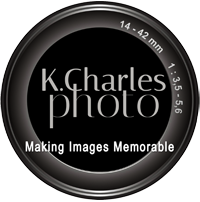Fusion photography vs “flambient” Photography
What is Fusion Photography?
Fusion photography is a style of photography also known as “HDR” photography. “HDR” stands for High Dynamic Range. The human eye has a highly developed ability and thus a wide range to see in both light and darkness. However, the best camera in the world still cannot compete with the ability of the human eye in that regard. That limitation poses a challenge for interior photography where darkness and light are both present. Taking a single shot of any room will result in a photo that will only expose for the midtones with the areas in shadow too dark and the highlighted areas blown out. High Dynamic Range, or HDR, photography helps to solve the problem somewhat. It is used by most real estate photographers because it is a rather quick and easy solution to the problem. In this method, the photographer will take anywhere from three to as many as seven exposures of a room. Each exposure will be set incrementally for the darkest areas to the brightest areas assuring that every area of the room is exposed correctly. Then, in post processing, each exposure will be blended together producing a final image of “high dynamic range,” that is, a photo that is properly exposed for shadows, mid-tones and highlights and is more in line with how the eye would see the room.
What is “Flambient” Photography?
Flambient photography is a technique developed by photographers that were not satisfied with the results of HDR fusion photography citing the loss of true color tones, the strong color-casts and the tendency for highlights to be way over-cooked. The flambient method provides a much better image. It involves the blending of a flash shot with another shot that is taken only using the existing ambient light (from sunlight and the light coming from the electric lights in the room). The word “Flambient” was coined to emphasize the method of blending a “flash” exposure with an “ambient” exposure, thus, “Flambient.” The benefits of blending a flash shot with an ambient shot is that the flash shot provides the true color of the room. It eliminates the ugly color-casts that can come from numerous sources. The ambient shot brings in the proper luminosity of the natural light and shadows. A flash shot alone would be too flat and would look unnatural. Blending it with the ambient shot brings together the best of both worlds; the true color of flash and the proper luminosity of the ambient light. It POPS!
Samples (fusion on left, flambient on right)
In the samples below, we have the same house photographed by both methods. In the fusion photo on the left, you will notice the blown-out highlights on the floor, the windows are cloudy, the colors are desaturated. There is also a purple hue on the flooring which often happens when the bluish hue of sunlight hits the reddish hue of the wood flooring: red + blue = purple. Ouch! The flambient shot on the right has solved all those problems. The flooring looks rich without the blown-out highlights and purple hues. The windows are clear and the outside greenery displays well. The connecting breakfast and kitchen area is well-lit showing nicely its relationship to the large family room. . .it POPS!
Which looks sharper, with deeper colors without blown-out highlights and purple color cast on the floor?
In our second example below, we see similar problems with the fusion photo. Highlights blown out, more purple hues on the flooring. color is drained and the family room with the fireplace looks dark and uninviting. In the flambient on the right we see the texture and color of the flooring, highlights are not blown-out, colors are true and, most important, the family room and fireplace is well lit and inviting. It draws the eye through to the whole space. . .and.. ..yea, it POPS!
One more example: The fusion photo on the left has gray discoloration and purple highlights on the floor beneath the piano. The red tones are desaturated. In the flambient on the right, the gray floor and purple hue are gone, the floor texture and red colors are more rich. The white cabinetry is more white.The greenery outside is more vivid and true to life. . . .just one more. . .that’s right. . it POPS!!!
Final Thoughts
Homeowners want to display their home in the best light. For them, it’s not just to attract the right buyer. . but it is also putting their home on-display to all their neighbors, friends and family. They want to be proud and want others to see their high standard of good taste and flair. Most homeowners, especially in the over $750,000 market, expect and demand a quality photo shoot worthy of Home and Garden magazine. Most photographers choose not to do flambient photography. It takes too much effort and time. It takes proper lighting with multi-flash units, strobes and light stands. Most photographers want to be in and out of your home in 45 minutes to an hour and on to the next house. They probably can make more money that way and some would certainly swear that for most real estate agents that’s good enough. But it’s not good enough for me. I’ll be in the house a minimum of two hours and, depending on the size of the house, three and four hour shoots are not uncommon. . . as they say, the proof of the pudding is in the eating. . and when you eat it. . .it better snap, crackle and POP!
K.Charles Photo 703-338-1135 kcharlesphoto.com mcbuff427@gmail.com



